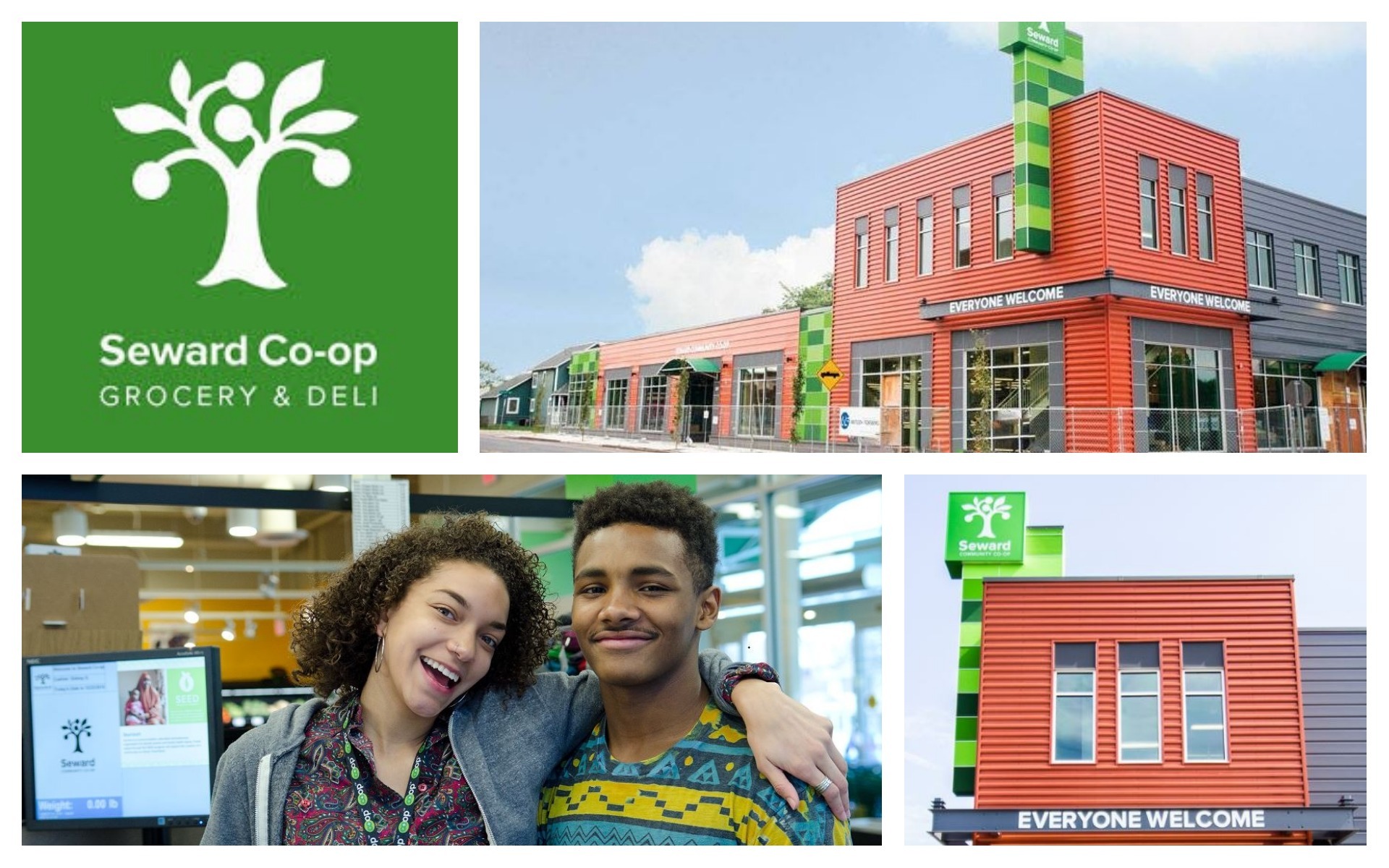
Seward Community Co-op
Minneapolis, MN
Year founded: 1972
Member investment: $75
Number of members: 16,000
Number of employees: 335
Business units: two retail grocery stores, restaurant, production facility
In 2013, when Seward Community Co-op began the feasibility process for their second location in a historically African American neighborhood in South Minneapolis, it experienced a tremendous amount of community interest as well as sharp questions about the food co-op’s intentions. Was it just going to “parachute” in to the neighborhood without seeking and allowing for input? Were there going be jobs for residents? Who was going to benefit by this development? “You may believe what you are doing is purposeful and good, and another community may not agree with that. It was a teaching moment for us,” said Elizabeth Liddiard Wozniak, the co-op’s human resources manager.
Seward Co-op realized many important things about their organization that propelled them to make radical internal changes as they began developing their second store. They looked at their Ends alignment. How could they operate in a community and not be representative of the people in it? How were they actually reflecting their Ends of a “healthy community, equitable economic relationships and inclusive socially responsible practices?”
 The co-op needed to make a real commitment to racial and economic diversity, and it had to be top-to-bottom change, from the way they engaged with community stakeholders externally, to examining their internal cooperative culture. The co-op was more diverse than most food co-ops, since the Franklin store’s location is in Seward, a neighborhood with many East African immigrants who worked and shopped at the co-op. But more work was needed.
The co-op needed to make a real commitment to racial and economic diversity, and it had to be top-to-bottom change, from the way they engaged with community stakeholders externally, to examining their internal cooperative culture. The co-op was more diverse than most food co-ops, since the Franklin store’s location is in Seward, a neighborhood with many East African immigrants who worked and shopped at the co-op. But more work was needed.
Co-op leadership needed to step up to the challenge of opening the second store in ways that were new to the 40-year-plus organization. Wozniak said one of the first things the co-op did was to hire experts to assist the co-op with this work. Wozniak stressed that this is work that is highly individual, requires a deep commitment from everyone, and needs strong support from experts. It’s not something co-ops can implement just with a how-to handout.
Wozniak credits their diversity and outreach manager, LaDonna Sanders Redmond, as well as the consultant Beth Zemsky, from Intercultural Organizational Development, with helping the co-op in the transition from a dominant culture mindset to more inclusivity.
As part of their work, co-op leaders did an Intercultural Development Inventory (IDI), to assess cultural attitudes that may impact how people work together. The IDI helps identify whether an individual or organization is in one of 5 stages around cultural differences, which is polarity, denial, minimization, acceptance and adaptation. Wozniak said the IDI results were invaluable. “It’s so important to do it. It was a driver for raising awareness.”
“One of the first steps we did was to take apart our hiring process. If you do what you always do, you’ll get what you always get,” said Wozniak. The co-op never needed to do much outreach for hiring since most jobs posted online attracted 100 applicants, or more. Alot of people hired were those already in the co-op’s orbit in one way or another—having a friend who worked there or spent time in the natural food industry.
They started to work with community organizations to do job postings that would go out to a wide array of applicants. “We also started to ask cultural competency questions in interviews,” Wozniak said. Could people adapt to others? Could they self-reflect or handle different situations? The other important human resources thing they did was review their new hire orientation process. “We needed to evaluate how to tell our story in order to bring more people in to the organization,” Wozniak said, and that meant making sure all materials, videos and handouts did not just reflect dominant white culture.
The co-op also launched a Cultural Awareness task force that looked at workplace culture and retention. Wozniak said they were successful in attracting people as they went from 14% workers of color in 2014 to 37% in 2015. “You can count the numbers and say ‘aren’t we great’ but there’s a difference between ‘diversity’ and ‘inclusiveness,’” she said. She said the co-op needs to continually monitor how well the co-op is doing to meet the needs of all of its workers. A recent in-house satisfaction survey indicated that people who self-identified as LGBTQ and people of color had scores that were in line with the co-op results as a whole.
Now they want to make sure they continue to retain people and provide opportunities for growth. The Diversity Team does training for all current employees and is active in creating a leadership development program. Wozniak sees a huge need for leadership training across the board. “People love a good manager and leaders who address things. In order to grow and for people to get promoted you need to get them ready,” she said.
Have more questions?
Get in touch with one of our consultants.
